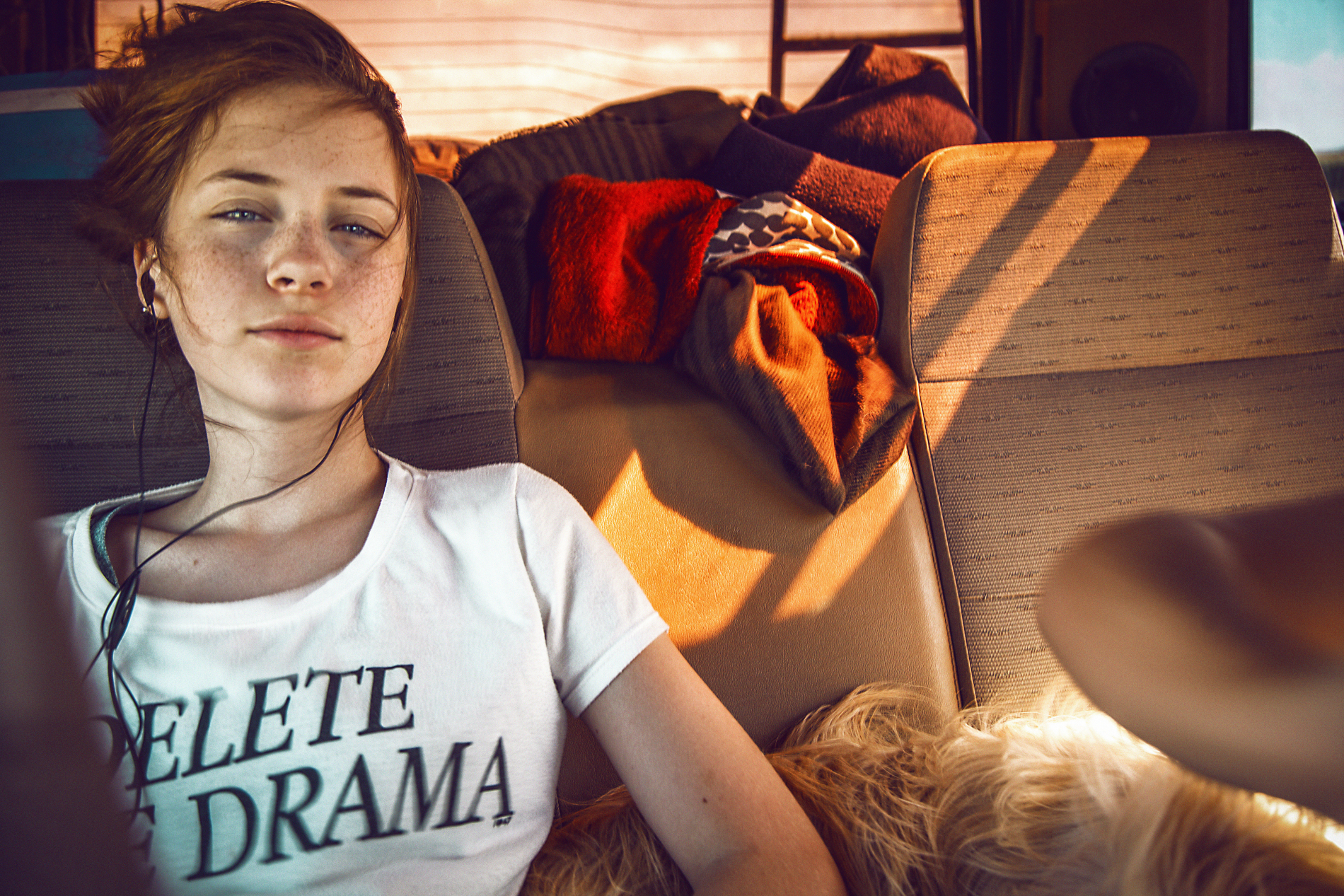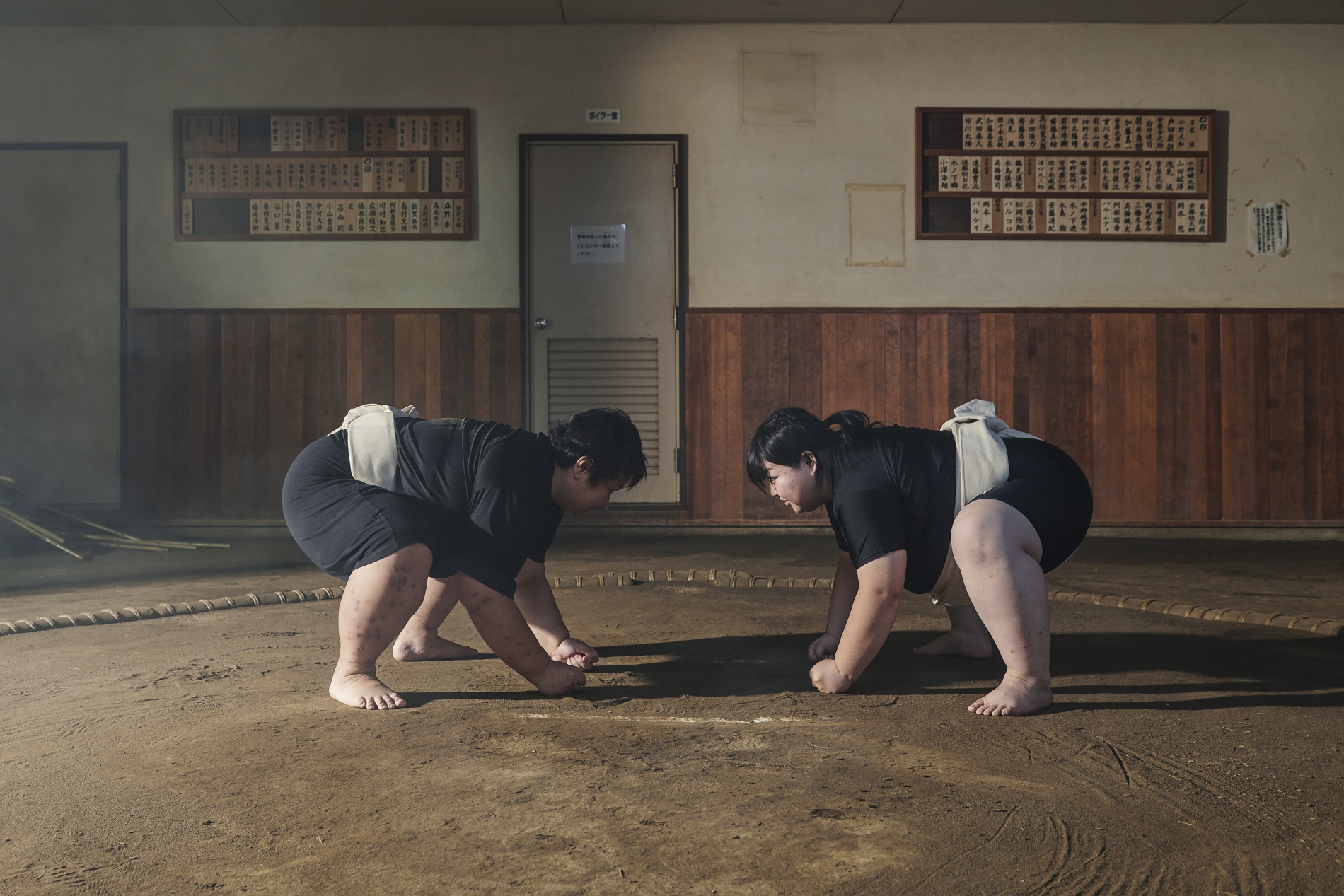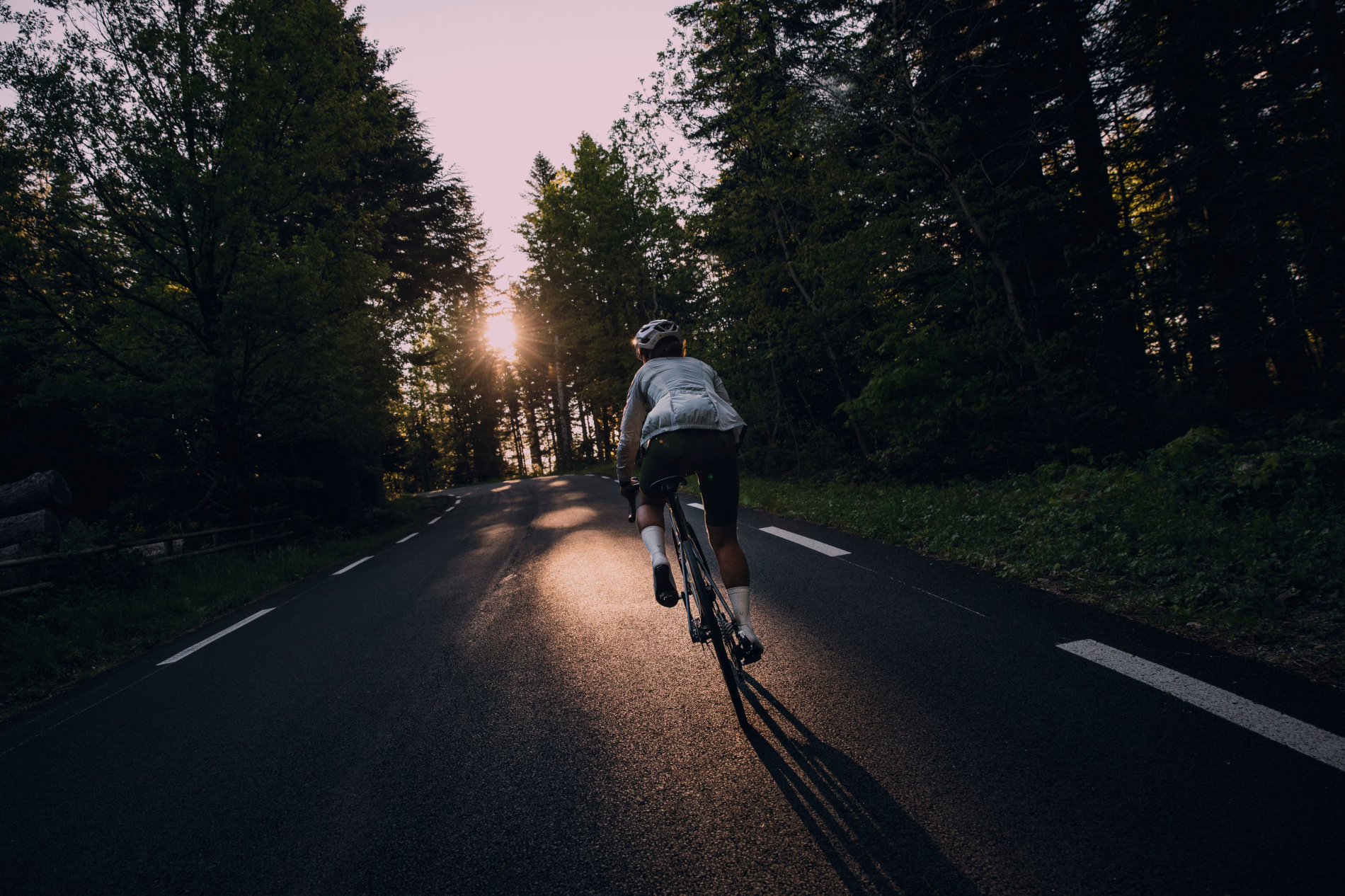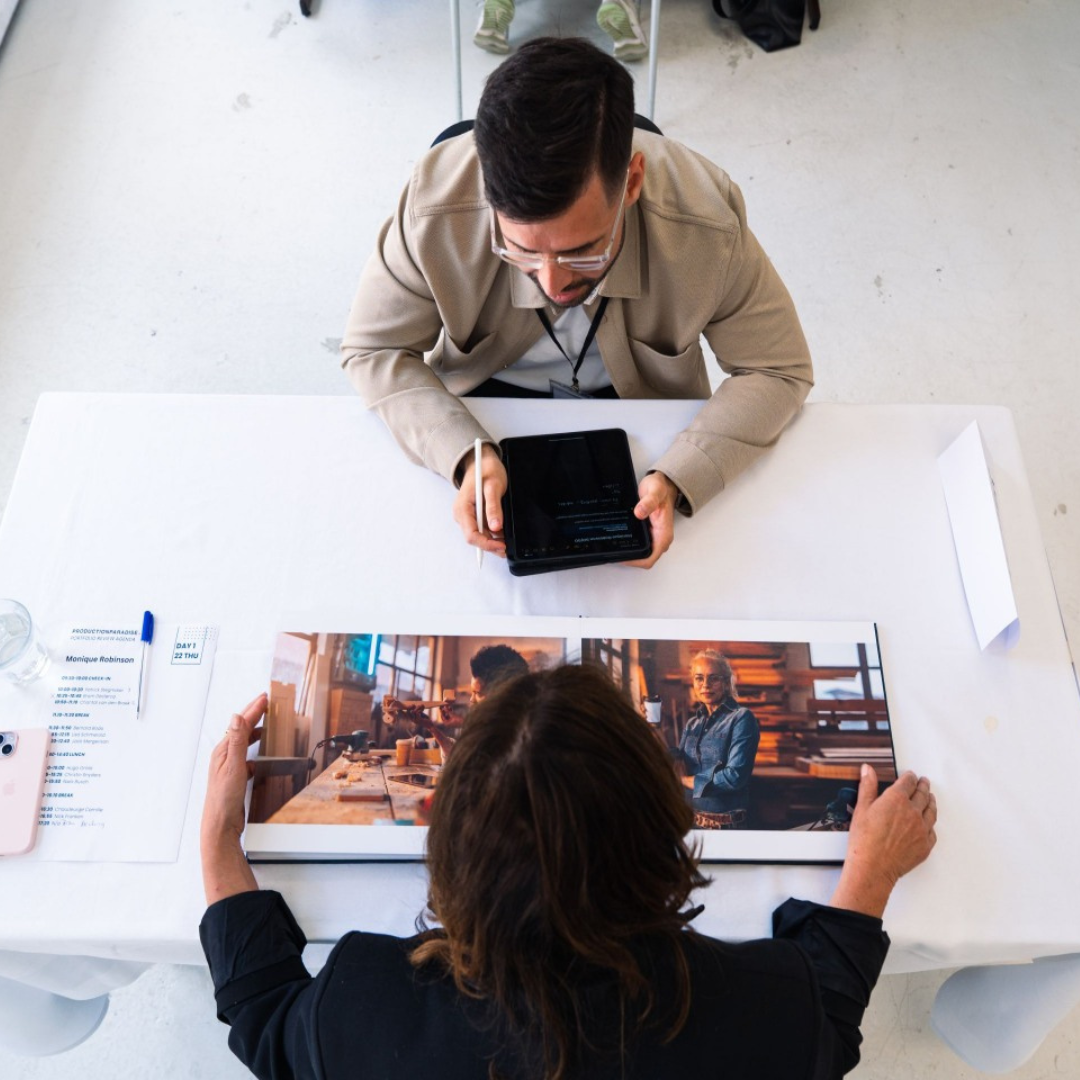Every creative dreams of landing that breakthrough commercial project — the one that puts their work in front of the right eyes. But how do top art buyers, producers, and agencies discover creative talent and select photographers?
We interviewed top art buyers, creative directors, and producers to uncover how major agencies and brands find photographers. They share the key qualities they seek, the mistakes to avoid, and advice for creatives aiming to break into commercial photography.
Whether you’re an emerging photographer or seasoned creative, these insights reveal how to get noticed by agencies and land commercial photography work in today’s competitive market.
We are grateful for the creatives that took their time to give us their advice from experience in the industry:
- Raphael Soria, Senior Art Director at Ogilvy, Spain
- Rossana Coruzzi, Senior Art Buyer for Prodigious/Publicis, Italy
- Kerstin Mende, Head of Art Buying at Scholz & Friends , Germany
- Nathalie Maudet, Head of Art Buying at Publicis , France
- Andy Wyeth, Managing Director at Serviceplan Group, Germany
- Tito Gouveia, Art Director at Leo Burnett , Portugal
- Lucas Silva, Creative Art Director for DDB, Hungary
- Fedja Kehl, Creative Director at Monks, Germany
- Caroline Michaelis, Creative Director at Monks, The Netherlands
- Daniel Massih, SVP Group Creative Director/AD at Humancare , USA
- Bernardo González, Creative Director on Amazon’s Global Marketing Team, USA
- Felipe Braz Costa, Executive Creative Director, Edelman, Spain
- Mariano Testa, Filmmaker & Creative Director, ex. Senior VP of Global Creative at Kiehl's, USA
- Roberto DeJesus, Producer at Herbalife, Italy, ex GUESS

What are the most essential qualities you look for when scouting creative talent?
Raphael Soria: I look for someone who is passionate about what they do. This is clearly reflected in what this person develops. Along with that, I would add that this person must be open to the world, to information, to opinions, to knowing and wanting to learn more. In general, they are extremely respectful people in a creative process and are always evolving. As it also becomes clear in the theme and the way these people approach their projects.
Felipe Braz Costa: Originality, consistency, and authenticity are essential. A photographer must have a strong artistic voice, a defined aesthetic, and the ability to evoke emotion through their work. At the same time, adaptability is key—those who can balance their creative identity with commercial demands tend to have long-term success.
Rossana Coruzzi: I make sure they are highly skilled with lighting, capturing the protagonist in a way that brings the picture to life. I also look for expertise in understanding and delivering the output requested by the client.
Kerstin Mende: First of all, it’s the portfolio and the social media performance that counts. For me it's also good to know the artist personally so I can evaluate if she or he also fits to the team and client. Meanwhile not only photography is requested but also moving images. That means it’s helpful for a talent to cover both skills
Nathalie Maudet: Talent, sympathy above all, and often agility.
Caroline Michaelis: Boldness, a unique perspective, and that je ne sais quoi that makes their work unforgettable.
Andy Wyeth: For me personally, I look for a mix of originality, versatility, and problem-solving ability. Originality is key: talent needs to bring fresh perspectives and ideas that stand out. Versatility ensures they can adapt to different projects, audiences, and creative challenges. Most importantly, I value problem-solving skills—people who can turn a tight brief or a last-minute change into an opportunity for innovation. Beyond the work itself, professionalism, clear communication, and a collaborative mindset are non-negotiables for me.
Tito Gouveia: Finding people who truly fit the brief is challenging. Sometimes I come across candidates who almost match, but I focus on those who align perfectly. It’s a difficult process, which is why having a trusted network is essential for sourcing the right talent.
Fedja Kehl: Talent, interest, curiosity, and personality are all pivotal aspects, especially in our industry where teamwork is paramount. Assessing whether a creative individual aligns with the team is a crucial consideration.
Roberto De Jesus: It all depends on the project. But I have to go back to two things that I got taught as a kid: which is someone that’s organized and responsible. I think when you have those two attributes, you can succeed; even with a huge amount of adversity. If you have those two qualities, you’ll be a sponge. You’ll know when to listen, you’ll know when to talk, you’ll know when to follow whoever takes the lead.
Bernardo González: I like people who have a strong personality and POV in their portfolio. Even if it’s student work, I like seeing some sort of connecting thread in all of their work. Whether that’s someone who specializes in strong comedic writing or hypnotic and charming visual-driven work, I like to see their personalities come across in the work. That tells me they had a big role in crafting the work and that they are producing work they truly believe in.
Daniel Massih: I really like creatives that are always open to learning more. The road is long and we should never stop improving ourselves. I don't just mean creatives who are open to feedback from their creative directors, but those who are hungry to experiment and find the new. The ones who constantly go after a new technology or technique. Creatives like that are more likely to bring fresher solutions to the table.
Mariano Testa: People who are open to a real collaboration, who are passionate about work but not after the money per se.
💡 Key Takeaway: Buyers want more than just technical skill — they look for personality, adaptability, and a clear creative voice.

How do you usually discover new talent?
Nathalie Maudet: It is very important to keep up to date with new talents at all times. We organize a photographer appointment almost every day at the agency. The Jury and the events are also very useful. I am part of the school's Jury for years and several events Jurys. The magazines from Production Paradise are also a great way to new talents and I open all of them. Finally, social media can also be a good way.
Caroline Michaelis: Creative whispers, industry chatter, project credits – I'm always on the hunt.
Andy Wyeth: I often discover new talent through platforms like Instagram, Behance, and curated resources such as Production Paradise. They’re great tools for exploring a wide range of photographers and finding the perfect match for a project’s unique needs.
Tito Gouveia: I use Production Paradise, study credits, and save everything that catches my eye. PP helps me find locations and understand different types and genres of photography. I look at both commercial and personal work—commercial work matters, but it’s the personal work that engages me most and shows what someone can do creatively.
Mariano Testa: Doing a lot of research, looking for new editorials and also referrals from my friends in fashion and beauty.
Felipe Braz Costa: I discover new talent through multiple channels, including social media, creative festivals, industry referrals, and platforms like Production Paradise. However, what truly makes a photographer stand out tome is their narrative and identity. A technically perfect image is not enough—it needs depth, emotion, and a distinctive voice behind it. That’s what creates a lasting impression.
💡 Key Takeaway: The way creative directors and producers scout new talent has evolved. While social media and digital platforms are key tools, referrals, curated directories, and trusted networks remain essential for finding standout photographers.

What qualities make a photographer stand out in your eyes?
Mariano Testa: Someone who has personal projects and interests that allow them to think outside the box and create magic that is not tied to a brief.
Kerstin Mende: It is always helpful to be versatile. I pay attention to whether someone is good with light, is good to motivate the models so they can behave in a natural way and feel comfortable, creates good unseen images. It's also helpful if a photographer is good with motion pictures, at least has a feeling for moving image. Nowadays it crucial also to produce gifs, snippets etc.
Felipe Braz Costa: A photographer stands out when they have a distinct visual signature and a strong storytelling ability. Technical skill is expected, but what truly differentiates a photographer is their perspective and the depth behind their work. Passion, creativity, and a well-defined artistic voice make a lasting impact.
Caroline Michaelis: A curated portfolio showcasing their strongest work. Daring side projects are a bonus.
Rossana Coruzzi: Very good with the lights, able to shoot the protagonist of the picture (both still or people), making it amazing. Also, skilled to understand which is the output requested by the client.
💡 Key Takeaway: Photographers stand out through more than technical skill — it’s their unique voice, creative perspective, and ability to adapt that leave a lasting impression. Passion projects, storytelling strength, and versatility across formats like video or GIFs give them an edge.

What’s the biggest mistake photographers make when trying to work with agencies/brands?
Nathalie Maudet: To question themselves if you don’t call them back quickly. Agencies and clients are often overwhelmed, and campaigns don’t always match the portfolio, no matter how talented the photographer may be.
Felipe Braz Costa: The most common mistake is failing to research the agency or brand before reaching out. Many photographers send generic portfolios without considering whether their style aligns with the client’s identity. Another frequent issue is a lack of clear communication or professionalism when presenting their work. Understanding the brand’s creative language and tailoring the approach accordingly makes all the difference.
Andy Wyeth: The biggest mistake is not understanding the brand’s vision or failing to tailor their approach to the project. Generic pitches, outdated portfolios, or a lack of flexibility can make photographers seem out of touch. Agencies and brands value collaboration, so showing that you understand their needs and can bring something unique to the table is crucial. Personalisation and professionalism also go a long way.
Caroline Michaelis: Passive reliance on agency creatives. I value proactive problem-solvers with a unique vision.
Kerstin Mende: A big mistake is not preparing well for interviews and asking, for example, what kind of clients the agency looks after. You should research this in advance, or not ask. Being late for appointments. Being too cheeky.
Mariano Testa: They make it about themselves and not the brand. Most photographers reach out without doing a proper dive into the brand and showcase work that is relevant for them.
💡 Key Takeaway The biggest red flag is failing to research and align with the client’s brand and needs.

What qualities do you prioritise when selecting a photographer for a project?
Nathalie Maudet: The selection of the photographer will of course depend on the subject before everything. The priority will obviously be the photographic quality in relation to the creation to be produced. Certainly, interpersonal skills with agents and photographers can also be a decisive point for the final selection. Respecting the budget is also a significant factor depending on the clients.
Andy Wyeth: When selecting a photographer, I prioritise three key elements: relevance, creativity, and reliability. Relevance means ensuring their portfolio aligns with the project’s style, tone, and objectives. Creativity is about their ability to bring a unique perspective to the brief, elevating the concept beyond expectations. Reliability comes down to their professionalism—meeting deadlines, communicating effectively, and delivering high-quality results consistently. Ultimately, I want someone who not only understands the brief but brings something unexpected and memorable to the table.
Lucas Silva: A strong work ethic is a given—most people who reach me already have that. What really sets someone apart is their mindset: the ability to face problems head-on and push through them, to communicate clearly, and to build relationships. I value people who can network effectively, engage with stakeholders, and stay easygoing while keeping a long-term focus. When someone builds a solid relationship with me on a smaller project and delivers great work, I’m far more likely to bring them on for larger, long-term projects in the future.
I go through credits, then dig into the production details to find the client. It’s a multi-step process. I also look for recommendations in Hungary, but I don’t ask for many because the level often isn’t up to par. Instead, I’ll reach out to contacts in other countries who meet the standard I’m looking for.
Felipe Braz Costa: The main priority is finding a photographer whose visual style and storytelling seamlessly align with the project’s creative vision. Authenticity is key—I look for someone who can bring a unique perspective rather than simply executing a brief. Professionalism, reliability,and the ability to collaborate are also crucial. A great photographer is not just a technician but a creative partner who enhances the project with their vision and expertise.
Mariano Testa: I am a big believer in collaboration with any talent that I am booking, so building a personal connection and sharing the goals of the project more than just asking for an outcome, is crucial, so that natural connection is always welcome, I usually ask for personal projects more than the actual commercial portfolio too, it's a great way to break the ice.
Caroline Michaelis: Skilled storytellers with category experience are my jam. If not direct experience, show me you can nail the brief. Talent and vision are key.
💡 Key Takeaway: Top creatives don’t just look for skill — they value photographers who bring vision, reliability, and a collaborative mindset. A clear style, strong storytelling, and personal connection often seal the deal.

What’s one piece of advice you’d give to photographers who want to collaborate with leading agencies or brands?
Nathalie Maudet: Don’t hesitate to contact the Art Buying department and send their book by mail. We are there to move forward in the same direction and help them in their construction and their journey.
Kerstin Mende: Being well prepared before meetings, being on time, not talking too much. No presents ;)
Felipe Braz Costa: Be authentic and strategic. Instead of trying to appeal to every opportunity, build a strong creative identity and seek partnerships that genuinely alignwith your style. Networking is crucial, and staying attuned to industry trends helps photographers position themselves effectively. Leading brands look for photographers with a clear vision who can also adapt their work to commercial needs.
Caroline Michaelis: Network, stay informed about new business, and reach out when your skills align.
💡 Key Takeaway: A polished, professional brand combined with a personal, authentic voice helps photographers stand out.
What role does branding play in a photographer’s career?
Tito Gouveia: It’s very important. Your website should be well-curated and speak for you—never send a PDF. A strong, professional site makes the right impression. And don’t underestimate the power of being nice and polite—it can open more doors than you might think.
Lucas Silva: Branding is very important—not just in showcasing your work, but in showing who you are. Behind-the-scenes content brings out your personality and energy, which you can’t always feel from the work alone. Your website should reflect that: not only your best work, but also glimpses that let people connect with you on a personal level.
Mariano Testa: Having a clear portfolio that is easy to navigate is key, also being able to easily share their projects with the team is essential.
Caroline Michaelis: Less is more. A clean, simple layout lets the work shine. Don't let branding overshadow talent.
💡 Key Takeaway: Strong branding helps photographers stand out and connect with clients. A clean, well‑curated portfolio and authentic personal storytelling build trust, credibility, and memorability.
Thank you to all of the creatives who took their time to share their insights with us. You can find more creatives in our Directory and our Spotlights.
If you want to feature your own work on Production Paradise and show off your skills to agencies, brands and agents worldwide, contact us directly.
Thumbnail Image: Photographer Alexandrena Parker, rep by Photoplay Photography.
Header Image: Tom Joy

%20(2100%20x%20405%20px).png)


